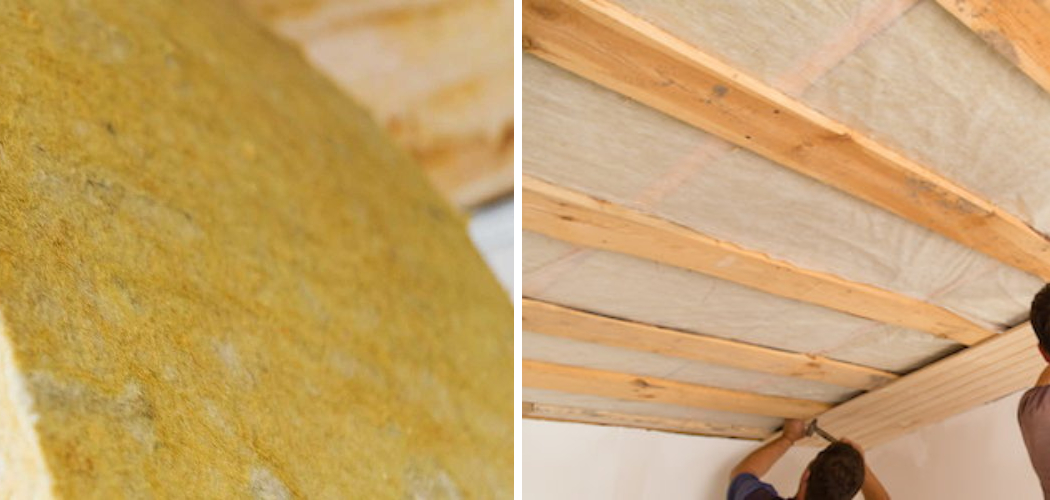Transforming a basement into a cozy living space often comes with the challenge of reducing noise from the floors above. Whether it’s footsteps, conversations, or household activities, a noisy basement ceiling can be a source of irritation.
Learning how to effectively reduce noise in your basement ceiling is crucial for creating a peaceful and enjoyable environment. In this guide, we’ll explore various methods and strategies how to reduce noise in basement ceiling.
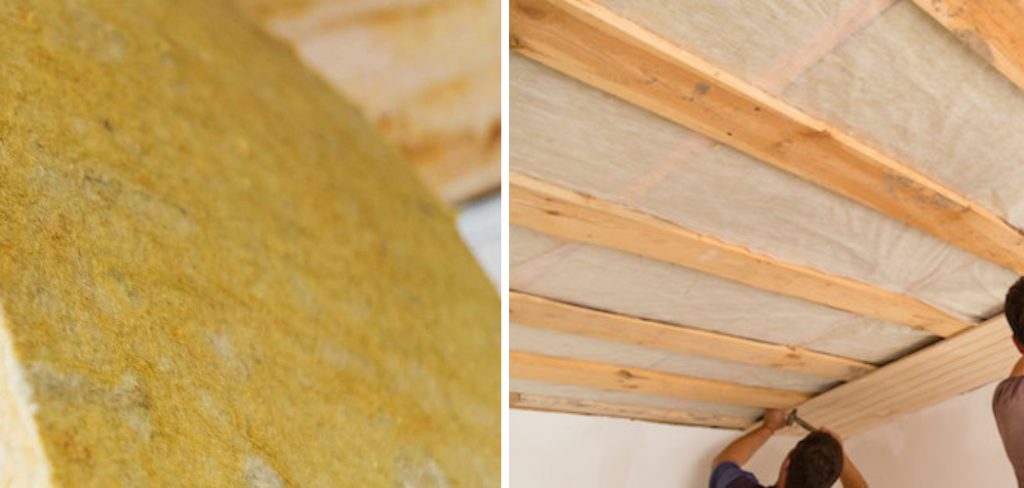
From soundproofing materials to strategic insulation techniques and other practical tips, we’ll cover everything you need to know to minimize noise and create a more serene living space. Enjoy a peaceful, noise-free basement that allows you to fully relish the newfound functionality and comfort of your transformed lower level.
Importance of Reducing Noise for Comfort and Functionality
Noise pollution is an issue that can affect our daily lives in a negative way. From loud traffic to noisy neighbors, constant exposure to noise can have a significant impact on our health and well-being. This is especially true when it comes to the space where we spend most of our time – our homes.
Improved Sleep Quality
A quiet environment is essential for a good night’s rest. As basements are often used as bedrooms or guest rooms, reducing noise can greatly improve the quality of sleep for those using these spaces. This is especially important for light sleepers or individuals who have trouble falling asleep.
Better Concentration and Productivity
Excessive noise can also disrupt our ability to concentrate and be productive. This is particularly relevant for basements that are used as home offices or study areas. Reducing noise can create a more suitable environment for tasks that require focus and concentration.
Protecting Your Hearing
Constant exposure to high levels of noise can cause damage to our hearing over time. By reducing noise in the basement, we can reduce the risk of long-term hearing loss and protect our overall health.
Increased Property Value
A soundproofed basement can also add value to your property. Potential buyers will appreciate the added comfort and functionality that comes with a noise-reduced space, making it a desirable feature when selling your home.
Determining the Primary Sources of Noise in the Basement
Basements are often a place for relaxation, storage, and sometimes even additional living space. However, one common issue that homeowners face in basements is unwanted noise. Whether it’s from appliances, footsteps upstairs, or outside traffic, excessive noise can be quite disruptive to the overall enjoyment of your basement.
In order to effectively reduce noise in your basement ceiling, it’s important to determine the primary sources of noise in your specific situation. Here are some common potential sources of noise in basements:
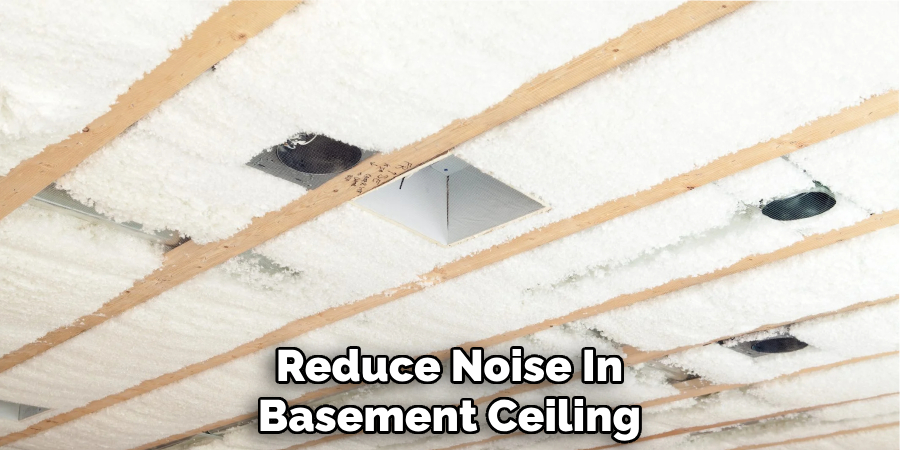
HVAC Systems
One of the main culprits for unwanted noise in basements is the heating, ventilation, and air conditioning (HVAC) system. This can include noisy air ducts, vibrating pipes, or a loud furnace or air conditioner. If the HVAC system is located in the ceiling of your basement, it can create a lot of noise that travels downwards.
Foot Traffic Upstairs
If there are often people walking around on the floor above your basement, this can also contribute to unwanted noise. Footsteps, especially in areas with hardwood or tile flooring, can easily travel through ceilings and into your basement.
Outside Traffic and Environmental Noise
If your basement is located near a busy street or highway, you may also experience noise from outside traffic. Additionally, if your basement has windows or doors that are not properly insulated, environmental noises such as wind, rain, or birds chirping can also be heard.
Once you have determined the primary sources of noise in your basement, you can take steps to reduce or eliminate them. This can include installing soundproofing materials, such as acoustic foam or insulation, in the ceiling of your basement. You can also make sure that any gaps or cracks in the walls and windows are properly sealed to prevent outside noise from entering.
custom-cut
10 Methods How to Reduce Noise in Basement Ceiling
1. Add Acoustic Insulation to the Ceiling
Adding acoustic insulation to the ceiling of your basement is one of the best ways to reduce noise from upstairs. The insulation will absorb sound waves and keep them from reverberating through your space.
You can opt for either fiberglass or mineral wool insulation, both of which are effective at reducing noise levels. Make sure to use a vapor barrier as well, such as plastic sheeting or a paint-on sealant, to prevent moisture buildup in the insulation.
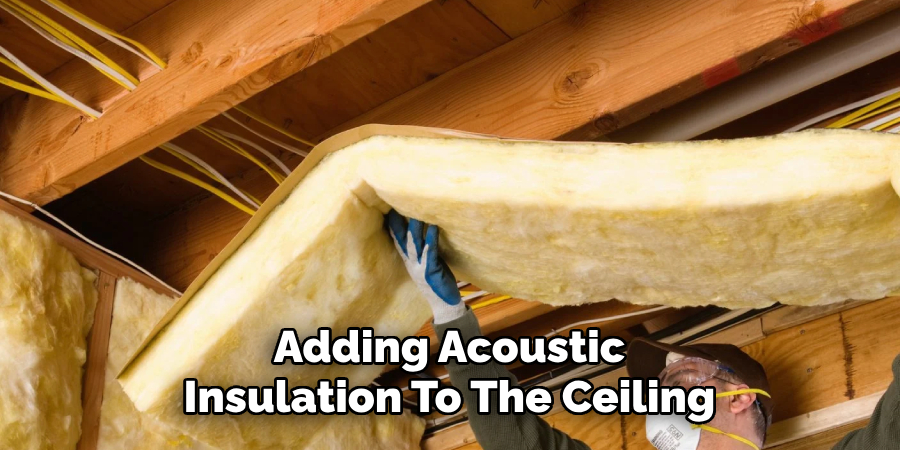
2. Install Soundproof Drywall
Installing soundproof drywall is another great way to reduce noise in your basement ceiling. This type of drywall is thicker and denser than traditional drywall and is designed specifically for soundproofing applications.
It’s also important to use a special adhesive when installing soundproof drywall, as this will help create an airtight seal between each panel and further reduce noise levels.
3. Hang Soundproof Curtains
Hanging soundproof curtains on your basement ceiling can also be effective at reducing noise levels from upstairs. These curtains are made from heavy materials that block out sound waves and keep them from entering your space. If you don’t want to hang curtains, you can also install acoustic panels on the ceiling instead, which will have a similar effect but may require more work to install properly.
4. Use Sound Absorbing Foam
Using sound-absorbing foam is another great way to reduce noise in your basement ceiling. This type of foam has small pores that trap sound waves and keep them from reverberating throughout the room. You can purchase pre-cut pieces of foam or have it custom-cut according to your needs. Just make sure you use fire-retardant foam if necessary for safety reasons!
5. Install a Floating Floor System
Installing a floating floor system is one of the most effective methods for reducing noise in your basement ceiling area. A floating floor system consists of several layers of material that are designed to absorb sound waves and keep them from traveling through the floor joists into other parts of the house or even outside areas like neighboring yards or streets below street level. You’ll need specialized tools and materials for this project, so it’s best left up to professionals who know what they’re doing!
6. Add Mass Loaded Vinyl Barriers
Add mass loaded vinyl barriers on top of existing walls or ceilings in order to further reduce noise levels coming from upstairs rooms or floors above ground level. Mass-loaded vinyl (MLV) barriers are thick sheets made up of layers of rubberized material that act as an effective barrier against airborne sounds like voices and music.
They’re easy enough for DIYers with some basic construction skills, but if you’re unsure about tackling this project, it’s best left up to professionals who specialize in this type of work.

7. Use Green Glue Compounds
Green glue compounds are specially formulated adhesives that help dampen vibrations caused by noises coming through walls or ceilings. When applied between two layers of drywall, green glue helps absorb some energy before it has a chance to travel through walls, floors, ceilings, etc. This helps reduce overall noise levels significantly without having any major alterations done to existing structures.
8. Install Resilient Channels
Resilient channels are metal channels that are installed between two layers of drywall in order to provide additional support while also helping absorb some energy before it has a chance to travel through walls, floors, ceilings, etc. Installing resilient channels requires some construction skills but isn’t too difficult if you’re willing to put in the time and effort needed for this project.
9. Apply Sound Damping Paint
Sound-damping paint is specially formulated paint that helps absorb sounds before they have a chance to travel through walls, floors, ceilings, etc. While not as effective as some other methods mentioned here, applying sound-damping paint can still provide noticeable results when used properly. It’s relatively easy enough for DIYers with some basic painting skills but make sure you follow manufacturer instructions carefully!
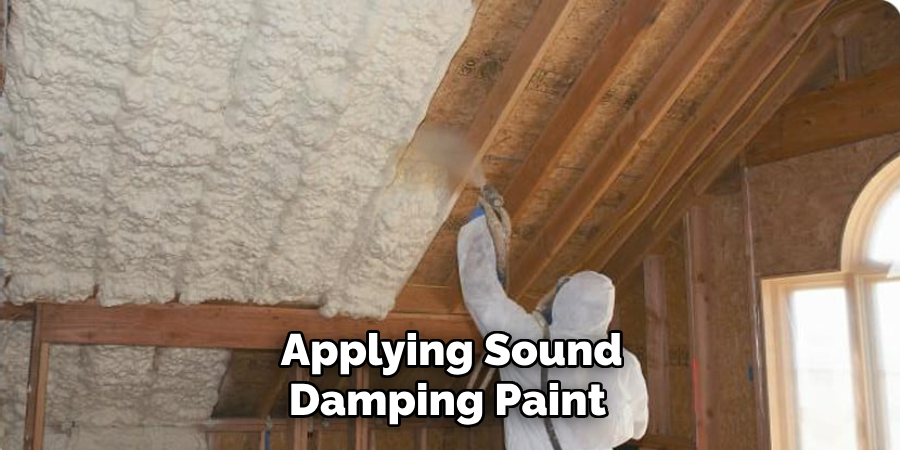
10. Add Acoustic Panels
Finally adding acoustic panels on walls or ceilings can also be helpful when trying to reduce unwanted noises coming through these surfaces. Acoustic panels come in various sizes shapes colors textures etc so finding something suitable shouldn’t be too difficult. Professional installation isn’t required but having someone experienced to handle this task would ensure optimal results!
Conclusion
After discussing how to reduce noise in basement ceiling, it’s time to take action. If the source of your problem is a gap in the insulation, then start by sealing it with an expandable sealant foam. If sound is coming through the floorboards or other forms of ventilation, like along the walls and corners of the room, consider adding a layer of Green Glue or insulating foam.
Having heavy furniture like couches near windows can help muffle sounds outside considerably. You can also invest in some acoustic tiles to improve the soundproofing in your basement ceilings.
